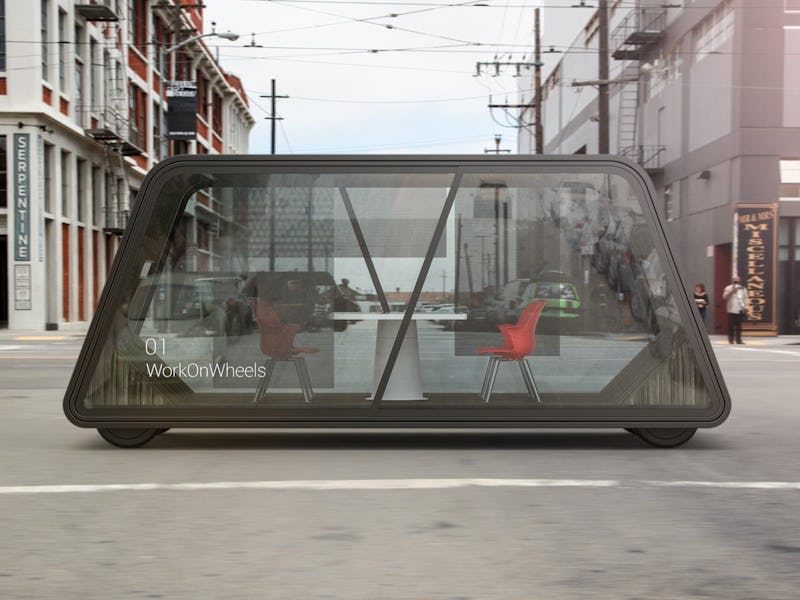Ready to work on the go? While some self-driving car proponents tout the technology’s potential to create “mobile offices,” turning precious travel time into productivity time, it’s hard to see how people could produce good work in shaky setup trundling along the road. A new vibration-proof material this week could provide the answer.
A research paper from the University of Surrey, University of California, and Johns Hopkins University details a new material that’s as stiff as metal but protects against vibrations. It uses 3D woven textile composite sheets, so the insides of the material move while the exterior stays rigid. The article, titled “damping of selectively bonded 3D woven lattice materials,” was published in Scientific Reports.
“The idea of a composite the resolves the paradox of stiffness and damping was thought to be impossible — yet here we are,” lead author Stefan Szyniszewski, assistant professor of materials and structures at the University of Surrey, said in a statement. “This is an exciting development that could send shock waves through the car, train and aerospace manufacturing industries. This is a material that could make the vehicles of the near future more comfortable than ever before.”
It’s a big breakthrough, and one that could enable some of the more outlandish uses for autonomous cars. Jeffrey Tumlin, director of strategy at Nelson/Nygaard, told Inverse in November 2016 that he predicts Amazon and others sending out bookmobiles, or even autonomous Starbucks on wheels. Another concept from Audi at the 2015 Geneva International Motor Show showed an autonomous gym, while artist Dominic Wilcox developed a bed on wheels that could take users to their destinations while they sleep:
Wilcox's stained glass bed vehicle.
With the promise of vibration-free travel, these ideas and more seem closer than ever. All that’s left now is to perfect level five autonomy to the point where such vehicles won’t need a driver paying attention to the road.
Read the paper’s abstract below:
The objective of this paper is to unveil a novel damping mechanism exhibited by 3D woven lattice materials (3DW), with emphasis on response to high-frequency excitations. Conventional bulk damping materials, such as rubber, exhibit relatively low stiffness, while stiff metals and ceramics typically have negligible damping. Here we demonstrate that high damping and structural stiffness can be simultaneously achieved in 3D woven lattice materials by brazing only select lattice joints, resulting in a load-bearing lattice frame intertwined with free, ‘floating’ lattice members to generate damping. The produced material samples are comparable to polymers in terms of damping coefficient, but are porous and have much higher maximum use temperature. We shed light on a novel damping mechanism enabled by an interplay between the forcing frequency imposed onto a load-bearing lattice frame and the motion of the embedded, free-moving lattice members. This novel class of damping metamaterials has potential use in a broad range of weight sensitive applications that require vibration attenuation at high frequencies.
